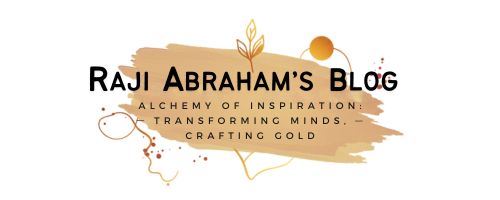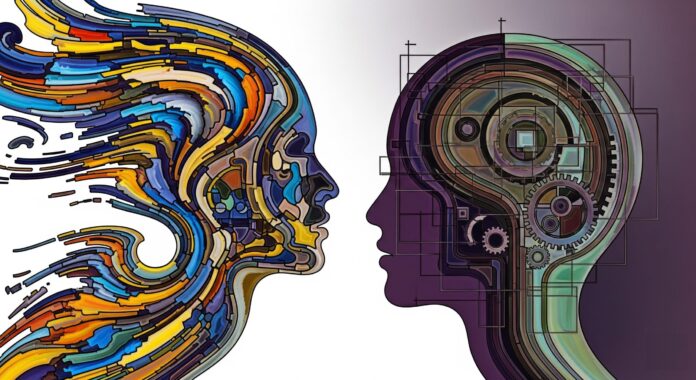In my everyday meditation practice, I have a routine to sit quietly, stay still, and observe how my mind wanders. Depending on what’s happened or what is going to happen in the time proximity, I have a series of thought patterns arising and falling. Why is this not working? Why is this person saying this? What am I going to do now? When should I take care of this? And so on. Interspersed in between is another thought that says Wait. I am supposed to meditate. What thought sequence led me to this? After nearly 25 minutes of wrestling with these thoughts, the intensity of these thoughts subsides, and gradually, my second thought stream of observing gets more attention. And yet there is another part of my mind that is still observing this observer, or is it the second one realizing it is observing?

During a routine progress check, Gunner and his business partner Alex clash over a slight delay in a marketing campaign. Alex calmly explains the delay due to creative team issues, but Gunner’s frustration quickly escalates into an angry outburst. As Gunner berates Alex for the setback, accusing him of constantly underperforming, Alex tries to defuse the situation, but is met with more aggression. Gunner, unable to control his temper, slams his fist on the table and threatens to replace Alex, who, fed up with the toxic environment, calmly responds that he’s done. The argument spirals out of control, with Alex walking out, leaving the partnership shattered. Gunner, realizing the gravity of the situation, is left with the painful truth that years of collaboration have ended in a single, explosive moment of rage.

Ellen, overwhelmed by the noise of her son Ryan’s video game, snapped at him when he ignored her request to lower the volume. When Ryan, frustrated, threw a tantrum and expressed his feelings, Ellen, already exhausted, harshly told him to stop whining and dismissed his emotions. Ryan, crying that he was unheard, felt the sting of his mother’s anger, but Ellen, blinded by her own frustration, ignored his pleas. Later that evening, as Ellen reflected on the situation, she realized she had been unfair to Ryan, treating him harshly instead of listening to his needs. Filled with guilt, she apologized the next morning, acknowledging her mistake and vowing to do better. However, Ryan, still hurt and unsure, struggled to forgive her, and the damage of the interaction lingered in his heart, leaving a scar that couldn’t be easily healed.

Calvin arrived at the buffet determined to stick to his weight-loss plan, envisioning healthy choices and restraint. But the vibrant dining hall overwhelmed his senses with intoxicating aromas of roasted spices, sizzling herbs, and an array of colorful, beautifully presented dishes. One by one, he gave in, filling his plate with rich mashed potatoes, smoky ribs, crispy fried treats, and sweet fruit compote, each bite more tempting than the last. The initial delight soon faded into discomfort as his stomach became uncomfortably full and his energy sluggish. Leaning back with a heavy heart, Calvin was struck by a sharp wave of regret, realizing that the feast had undone his resolve. The seductive allure of the buffet’s sights and smells had drawn him into overindulgence, leaving him stuffed and remorseful.
In each of these incidents, I observe two parts of our mind. I would have concluded in the latter three situations that it is our same mind reflecting on the incident and having time to process and analyze. But in the case of meditation, I feel the two minds acting at the same time. I started thinking, do we have more than one mind? I wanted to know if I am the only one feeling this way. So I started my search for others thinking similarly. And my search quickly returned me with startling information.
For centuries, at different times in history, this thought has been addressed, albeit with slight variations. But the fundamental concept remained the same. The interactive chart below shows how, for over 3000 years, mankind has known the two mind models of our brain. What was intriguing was that each of them used a different metaphor to describe the concept.
Click on the blue dots below the timeline to get details about the concept. Scroll horizontally or vertically and use the – and + or the 100% buttons to zoom the timeline in and out.
- The metaphor changes over time — charioteer & horses, flesh & spirit, elephant & rider — but the underlying insight stays consistent.
- Ancient traditions emphasize moral and spiritual governance of the reactive mind.
- Modern science focuses on cognitive and neural mechanisms of this split.
- Across history, the Executive is often idealized as “in control,” but neuroscience shows it often arrives late, rationalizing decisions already made by the Slave Worker.
Now, think about this for a moment;
- So many of the great disasters in history, wars, battles, genocides, empires crumbling, people cut down, didn’t start with strategy or reason. They started because someone let their emotions take the wheel. A flare of anger, a swell of pride, a stab of fear. If only, in those heated moments, the “Executive” part of the mind had tapped the “Slave Worker” on the shoulder and said, Hold on, let’s think this through, history would have told very different stories.
- We even glorify this fiery state. The “Angry Man” persona is a staple of our plays, movies, and legends. We love watching the storm break loose because emotions are magnetic; they pull us in. I’m not saying we should never feel them. Life would be dull without that fire. But what we do need is a bit of oversight, a watchtower that sees the storm coming and says, Don’t get swept away.
- And here’s the kicker: this isn’t just about kings and generals. The whole field of marketing runs on the same principle. It’s about catching people in the net of their emotions. Ads, slogans, and campaigns all work by bypassing the Executive mind and tickling the Slave Worker just enough to make us click, buy, or say yes. If we can learn to pause, just long enough to let our Executive step in, we stop being easy prey. We take back the reins.
You don’t need to plow through stacks of books to figure this out. Just take a moment at the end of your day, when the noise has died down and you’re about to drift off to sleep. Sit quietly, breathe, and replay the day like a little movie in your head. Ask yourself: were my choices today driven by the quick, impulsive Slave Worker, or did the calmer Executive step in?
Then widen the lens a bit. Look at your life as it stands now. Are you where you wanted to be? Did some of your past choices steer you down roads you’d rather not have taken, if you had the chance again? That tiny spark of wondering, that pause where you notice the difference, that’s the seed of self-knowledge. It doesn’t start in a library. It starts in that quiet moment with yourself.
The Sanskrit phrase “Atma Gyanam Athi Sulabham” translates to “Self-knowledge is extremely easy” or “The knowledge of the Self is very easily attainable”. It’s a declaration from Hindu philosophy, particularly rooted in the Advaita Vedanta tradition and popularized by figures like Sri Ramana Maharshi, according to Sri Ramana Teachings.
But we make it difficult on ourselves. Our System 1 brain makes us run after things, makes us depend on our instinctive reactions, and turns us slaves to the material world. Pulls us to situations we wish we had avoided when the System 2 brain analyzes. So what do we do? Realizing that true self-reliance happens with our ability to let our Executive mind manage the Worker mind is the beginning of the path to liberation.
“Simple truths forever stand; without them, castles turn to sand.”
Yours Truly


